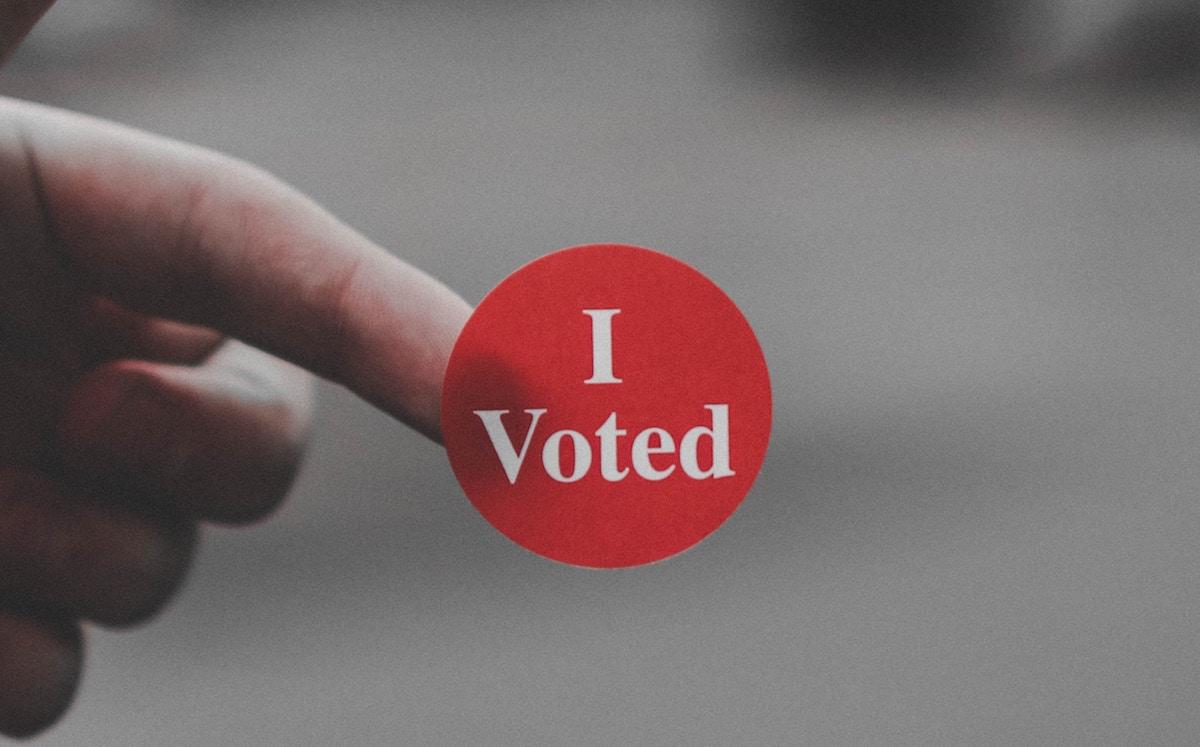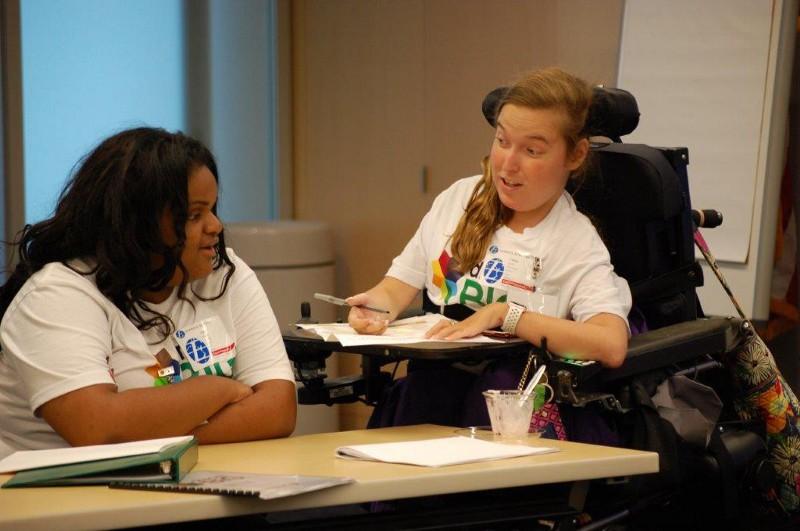Danone Striving for 100% Circular Packaging by 2025


The circular economy model goes beyond the typical extractive industrial model of take-make-dispose with an aim to reduce dependence on finite resources and eliminate waste and pollution. Instead, this concept keeps materials and products in use and regenerates raw materials.
Reinforcing its commitment to the circular economy, global food giant Danone (whose North American CEO, Mariano Lozano, was the winner of Responsible CEO of the Year for Public Benefit Corporation at last week’s 3BL Forum) has announced a range of steps to ensure its packaging becomes 100 percent circular by 2025.
Danone plans to achieve this goal through improved product design, alternative delivery and reuse models, investing in systems for increased recycling and actions to preserve natural resources.
Packaging Designed for Circularity
Danone has committed that by 2025 all its packaging will be designed to be 100 percent reusable, recyclable or compostable. The company has pledged that it will also develop alternative models to eliminate unnecessary or problematic plastic packaging.At present, 86 percent of Danone’s packaging is circular, and half of its water volumes are sold in reusable packaging. At evian, the company’s bottles are already 100 percent recyclable, and it is working on an innovation to eliminate shrink film for multipacks (which currently is non-recyclable).
Danone says the company also is planning to launch alternatives to single-use and plastic packaging in all its major water markets by 2025. It is also evaluating alternative solutions to replace plastic straws through a pilot program to be launched in Indonesia in 2019.
Circular Model in Practice
Circular design alone is not enough to make packaging 100 percent circular. Danone says it recognizes that effective systems for collection and recycling are required to ensure that packaging gets reused, recycled or composted in practice.Danone also recognizes that design won't be enough to make its packaging fully circular. Effective collection and recycling systems are essential to ensuring packaging is recycled, reused or composted in practice.
To meet this goal, the company insists that it plans to go beyond the regulatory collection targets (such as the minimum 90 percent collection target for beverage bottles to be imposed in 2025 by the EU). Danone will support proven collection and recycling systems, such as Deposit Return Scheme and Extended Producer Responsibility, as needed.
By 2025, the company aims to launch or support initiatives for collection and recycling in all of its top 20 markets (that represent about 90 percent of its sales). It has already invested $5.25 million in the Closed Loop Fund, an initiative to develop sustainable manufacturing technologies and large scale recycling infrastructure in the US.
Preserving Natural Resources
To achieve transition to a circular economy of packaging, companies must commit to discontinuing any use of packaging from finite resources. This commitment helps preserve natural resources and keep the existing packaging materials in use. Recycling is a key strategy here.Danone is using 14 percent of recycled PET on average in its water and other beverage bottles. It plans to increase the recycled content to 50 percent by 2025. The company’s evian brand already includes 30 percent recycled plastic on average, and aims to reach 100 percent by 2025.
Collaborating to Combat Waste and Pollution
Danone claims the company is fostering new alliances at global as well as local level to achieve its circular economy goals. The company will be joining hands with other organizations, led by the Ellen MacArthur Foundation, in collaboration with the United Nations Environment Program and like-minded organizations to take on challenges related to plastic waste and pollution."We believe the time is now to step up and accelerate, embrace our responsibility and work with others to engage a radical shift that will help free the world from packaging waste,” said Emmanuel Faber, Chairman and CEO of Danone. “We will be acting both at global and local level to ensure circularity of packaging becomes the new norm,” he said.
Image credit: Danone
Companies Step Up to Urge Voter Participation in the November Midterms


Even as partisan politics reach a fever pitch, voter turnout in the United States remains alarmingly low. On average, about 60 percent of the eligible voting population vote during presidential election years, and around 40 percent vote during Midterm elections, according to the electoral reform nonprofit FairVote. With less than two weeks until the Midterms, a new nonprofit initiative is rallying top companies to help get out the vote.
Launched yesterday, the Civic Responsibility Project wants to make it easier for companies to encourage voting among their employees and customers. “A country is only as strong as the engagement of its citizens—and right now nearly half of all Americans are opting out of our democratic process every election,” the Project team wrote in a press release. “The result of sustained levels of disengagement and fierce partisanship is a democracy that fails to meet the demands of a 21st-century society.”
The Project is offering a free toolkit to help companies give their stakeholders vital information about how to vote in this year’s Midterms—such as polling place locations, registration information and key dates like deadlines. It will also work with partner companies to personalize their get-out-the-vote initiatives and provide additional resources like customized voter registration links and state-specific voter registration packets.
“Many of America’s companies have proven track records in helping to solve social problems and have played a large part in shifting cultural attitudes,” said Ashley Spillane, advisor to the Civic Responsibility Project and former president of the youth voter engagement organization Rock the Vote, in a statement. “We need Corporate America’s help to ensure democracy is reflective of the overall population.”
The Project’s advisory board includes brand experts, media mavens and political operatives from both sides of the aisle. Along with Spillane, Nike alum Victor Nguyen-Long; Adam Conner, former government affairs pro for Slack and Facebook; and Brett Loper, a former American Express SVP who also served as chief of staff for Rep. John Boehner, are among those raising the call for greater voter turnout—saying, “Voter participation is not a partisan issue.”
Early voting is already underway in states across the country, including Georgia, Massachusetts, New Jersey and Texas. A total of 38 states plus the District of Columbia allow some sort of early voting (you can check out the timelines for your state here). And while voter registration has already closed in some places, 17 states and the District of Columbia offer same-day registration—meaning campaigns like these can not only summon registered voters off the sofa, but also get new voters to the polls.
Leading businesses like Twitter, Facebook, Lyft, Uber and Walmart are already getting involved in the effort to increase civic participation. One company, Patagonia, has taken a particular interest in this year’s Midterms.
The outdoor gear favorite has encouraged its community to vote with the planet in mind since 2004, but it's become decidedly more outspoken in recent years. Mere hours after the Donald Trump administration announced plans to shrink the size of Bears Ears National Monument in Utah by up to 90 percent last year, the company posted a brazen message on its homepage reading, “The president stole your land.” It also joined REI and other outdoor labels in a lawsuit against the administration to protect public lands.
This year, for the first time in the company’s history, it is endorsing two candidates for the U.S. Senate in an attempt to further push for the protection of outdoor spaces. Both candidates are running on land and water protection as key components of their platforms, Patagonia said.
In Nevada, home to Patagonia’s global distribution center, more than 650 employees and its famous Worn Wear repair center, the company is supporting Senate candidate Jacky Rosen. Patagonia has worked with grassroots environmental groups and state leaders on some of Nevada’s most important conservation accomplishments in the last 20 years. It helped advocate for the protection of some of the state’s most important landscapes, including the Black Rock Desert-High Rock Canyon Emigrant Trails National Conservation Area and Gold Butte National Monument.
“[Patagonia is proud to support] Jacky Rosen because she will fight to protect Nevada’s public lands and the vibrant outdoor industry that depends on them,” Rose Marcario, president and CEO of Patagonia, said in a statement. “Jacky has a strong record of defending public lands in Congress and protecting our access to clean air and clean waters. We need her leadership to protect Nevada’s economy and the basic health of its people, so the business community can thrive and so Nevadans can prosper.”
In Montana, where the company created its 1% for the Planet program, it’s backing Jon Tester—the only organic farmer in the Senate—for re-election. The company’s conservation efforts in Montana date back to the late 1980s when it began giving grants to support the Montana Wilderness Association—and it’s since doled out nearly $5 million to grassroots groups in the state.
Most recently, the company supported the Blackfoot Clearwater Stewardship Project. Championed by Sen. Tester, the initiative proposes to expand the Bob Marshall, Mission Mountain and Scapegoat wilderness areas by close to 80,000 acres, while “setting forth a collaborative vision that brings conservation, recreation, forest restoration and economic benefits,” the company said.
“We are supporting Jon Tester because he gives a damn about protecting public lands—and, like us, he’s committed to fight back against anyone who doesn’t,” Patagonia founder Yvon Chouinard said in a statement. “He goes to work every day for the 95 percent of Montanans who believe recreation on public lands is a priority.”
The company will feature the endorsements on its website and social media, as well as in customer emails. "This is not born from a desire to get into partisan politics," Patagonia's leadership insisted in a press statement. "In fact, it’s the opposite—it’s about standing up for the millions of Americans who want to see wild places protected for future generations. That’s something we will always do, regardless of political party."
Image credit: Parker Johnson via Unsplash
UPS to Launch E-Bike Delivery Solution in Seattle


Urban congestion is a growing problem around the world. With competing uses for city streets, congestion cost New York City and London a combined $46 billion last year, when fuel bills, increased shipping costs and wasted time sitting around in traffic were factored in, The Economist reported.
This has cities around the world looking for ways to decrease urban gridlock, using policies like congestion fees to ease the pain of slow-moving traffic. Enterprises that are affected by clogged streets are also coming up with innovations that enhance efficiency and leave a smaller footprint where they operate.
Logistics giant UPS is one such enterprise that for some time has been experimenting with more sustainable transportation solutions. Back in 2016, we reported on the introduction of an e-bike prototype, which UPS planned to use for deliveries in Portland, Oregon. Building upon that and similar operations in European cities, this week the company announced a new e-bike delivery system that will go into service in Seattle’s Pike Place Market and the downtown Seattle area. UPS collaborated with Silver Eagle Manufacturing on the design, as well as Truck Trikes to develop the system from the ground up.
“[What] makes this different and interesting is not that it’s an e-bike, or equipment, but it’s a system that is modular,” Scott Phillippi, senior director of automotive maintenance, engineering and international operations for UPS, told TriplePundit.
Specifically, unlike the earlier e-bikes UPS experimented with—or, more accurately, e-tricycles with permanent cargo boxes—the new iteration comes with 95 cubic feet containers that can be detached from the system. This means the detachable containers, which themselves have wheels, can be hauled around on foot where the environment demands. This ultimately makes the system even more flexible than prior UPS e-bikes, allowing a variety of needs to be met in the urban environment.
A big advantage with the modular approach is that when all of the deliveries are made from the first container, the driver can attach the next full container—staged at a nearby location in the city—without returning to a distribution center. This will save time and reduce package handling.
Each container expected to hold around 40 packages. The plan is that four containers—each preloaded for designated routes—will be staged close to their delivery areas, allowing the system to be maximally efficient. The containers themselves will be fitted with solar-powered GPS units to keep tabs on their whereabouts, enhancing their security.
The modular delivery system will go into service on November 5 with just one initial e-bike. While the Seattle Department of Transportation worked with with UPS in developing the system - with the goal of both reducing congestion and improving air quality - Phillippi says UPS has tried to take a proactive approach with this program rather than be in the mode of reacting to a congestion crisis. If successful, UPS will expand the routes and consider additional e-bike deliveries in other areas of the city. Down the road, Phillippi says other cities are interested in deploying similar programs, too.
The pilot program conducted over the next year will be evaluated in collaboration with the University of Washington’s Urban Freight Lab, where researchers will review the e-bike’s reliability, design and integration into Seattle’s infrastructure. UPS expects to learn very early on what works well—and what parts of the system need to be improved, Phillippi said. From the business perspective, “Even if we stay even, it will be an improvement as we’re reducing congestion,” he told us.
As with earlier e-bike systems, the company will invite employees to bid for driver positions—which it calls its team of “industrial athletes”—and Phillippi says employees are excited to participate.
Piloting the program in Seattle has some historic relevance, too, as UPS originated as a bicycle messenger service in the city back in 1907. Going forward, the cargo e-bike is part of a broader company strategy to continue to electrify its delivery fleet, UPS said.
Image credit: UPS
Breaking Down Silos, Cultivating Partnerships and Pure Authenticity Are the Way Forward for Brands Taking Stands


On day one of 3BL Forum: Brands Taking Stands—The Long View, approximately 300 people listened to 16 presentations, panels and interviews with 45 leaders in corporate responsibility. Topics ranged from diversity and inclusion; to the future of business leadership; to disruption; to new corporate reputation metrics for social impact. And these three key points were the indisputable unifying theme throughout: Break down all the silos. Cultivate partnerships. Let authenticity be your guide.
Keynote remarks by Shana Deane, CEO of 3BL Media, set the tone first thing: We cannot do this alone. “This” being the hard work of moving the needle and creating positive change. “Governments are not moving the needle; businesses are moving the needle,” said Deane. “The political spectrum has changed – the risk piece is scarier – and requires a new level of nerve and grit. Acknowledge the change and have the uncomfortable conversations. Embrace vulnerability”
Breaking down all the silos
In order to make this possible, corporations and NGOs need to break down the silos between departments within their own organizations first.
Chris Coulter, co-CEO, GlobeScan presented some highlights from the 2018 BSR/Globescan State of Sustainable Business Survey, which draws its data from surveying one sustainability practitioner at 152 BSR member companies. A key finding in this report states,
“Sustainability teams still struggle to get traction with strategic planning and core business functions. There is surprisingly limited engagement with investor relations, marketing, or human resources—despite the recognized significance of investors, customers and employees as key drivers of sustainability.”
Throughout the day, speakers validated this research with anecdotal evidence of how the breaking down of internal silos was the first, and sometimes biggest, hurdle to jump on their journey to scale up their social impact work. But once this was achieved, efforts moved forward at a quicker, more energized pace.
Many companies represented mentioned that their way through this challenge has been to embed their corporate responsibility and sustainability work deeply within the framework of their organizations.
It is not only internal barriers that need breaking however, as Tom Madrecki, director of urban innovation and mobility at UPS discussed. When they were looking to decrease their carbon footprint by making a transition from their legacy system of truck deliveries in urban areas, the silos between corporate leadership and the cities where they do business (in UPS’s case, all the cities) needed to be torn down to allow partnerships to emerge and give birth to the new system of centralized staging of packages and bike delivery in these areas.
Partnerships are vital
Once the silos are gone, the building of partnerships can begin, and their importance was repeated in literally every presentation.
As Wendy Soloman of The Harris Poll and Amy Terpeluk of Finn Parners presented from their findings in “A New Corporate Reputation Metric for Social Impact,” the rules of engagement are being rewritten. Doing good is no longer a choice for companies – American companies especially – it is an imperative for the bottom line, and an expectation from the public.
“Don’t see the public as ‘consumers’ – people everywhere are ‘leaning-in’ on how companies are behaving,” said Terpeluk.
This is a huge – albeit inferred only – mandate. To get off the ground, everyone – from the largest multi-national to the smallest local business – needs to work with organizations with the same goals and in most cases, already doing the work.
Like breaking down the silos, partnerships keep companies agile.
Let authenticity be your guide.
And how do companies know what the “right thing to do” is? All companies have a purpose – a mission statement that tells the world what their values are. In this time of Brands Taking Stands, this is what the public wants to see – a company walking their talk and taking authentic steps toward making a positive impact.
Jen Crozier, president of the IBM Foundation & vice president of IBM Corporate Citizenship, quoted her CEO as saying, “We will be unafraid to change anything about our business except our values.”
Hammad Atassi, CEO of American Sustainable Business Council said, “The future trend will no longer be to translate the action on a company’s values into ‘C-suite language.’ Sustainable business is becoming just business. It is the norm and expectation.”
And perhaps most importantly, he finished with, “Greenwashing is no longer ok; you can be called out in a moment if you are not taking authentic action.”
Image credit: Pexels
Healthy Soil 101: Why Soil Health Matters and How the Food Sector Can Help


Most of us don’t think too closely about dirt, but perhaps we should. After all, it’s the foundation of all life on Earth.
Beyond sustaining plant life—and the rest of the food chain along with it—soil itself is very much alive. One handful of dirt contains up to 50 billion bacteria and hundreds of thousands of individual fungal cells. As these microorganisms move through the soil, they feast on minerals and dead organic matter and leave nutrients behind, allowing plants to grow and ecosystems to thrive.
Meanwhile, the humble dirt beneath our feet is actively purifying our water and fighting climate change. As water sinks into the Earth’s surface, the soil holds on to pollutants like bacteria, minerals and harmful chemicals, resulting in groundwater that is clean enough to drink. When plants use water—along with sunlight and carbon dioxide—to create their own food through photosynthesis, their roots deposit carbon into the soil. This natural nutrient exchange increases the soil’s water retention, structure and fertility, which leads to healthier plants, less water runoff, and a net reduction in atmospheric carbon.
All of these seemingly miraculous processes allowed the soil to sustain life on Earth for millennia, but humans have the power to disrupt them—and we are. Vast clearing of forest vegetation has substantially decreased global soil’s ability to absorb water. When soil can’t absorb water, groundwater reserves are depleted, runoff-related flooding rises, agricultural fertilizers enter our waterways, and nutrient-rich topsoils erode. Commercial farms with little crop cover are particularly susceptible to erosion—and 30 percent of the world’s arable land has become unproductive due to erosion over the past 40 years. Likewise, soil degradation associated with large-scale farming has released 50 to 80 percent of the carbon once stored in soil.
The reality of declining soil health is concerning, to say the least, particularly as the global population is set to increase to more than 9.5 billion people by 2050. If we hope to supply enough food and clean water to meet their needs, we will need healthy soil to do it—and that requires significant shake-ups in the way we manage land.
Rallying research power behind soil health
In 2013, the Samuel Roberts Noble Foundation and the Farm Foundation assembled a group of farmers, agricultural industry pros, government agencies, and NGOs to examine soil health and its role in a sustainable ecosystem. As the group detailed the varied issues affecting soil health, it became clear that more collaboration was needed in order to produce accurate, science-based information about what soils need to remain productive. In response, the foundations formed the Soil Health Institute (SHI)—an independent, nonprofit organization charged with supporting soil stewardship and advancing soil health.
To put it simply, the Institute looks to move scientific knowledge about soil health from the laboratory to the field by providing farmers with the tools they need to better manage their soils. “Farmers are the ones who will help us achieve these soil health benefits for the environment and for productivity,” Wayne Honeycutt, president and CEO of the Soil Health Institute, told TriplePundit. “In the area of the business case, we need more information and more research on the profitability of these soil health systems, because farmers and ranchers are businessmen and women.”
The Institute’s Soil Health Research Landscape Tool, for example, consolidates and categorizes publicly-available information on how enhancing soil health can meet specific land management needs. Farmers simply enter some information about their land and crops, as well as the problems they’re looking to address—such as erosion, nutrient depletion or drought—and they’ll get a list of potential management actions based on available research. Implementing the suggested practices can help farmers enhance soil function, which in turn contributes to desired outcomes like increased water-holding capacity, better resilience to extreme weather and enhanced nutrient availability.
SHI researchers are also in the process of evaluating 30 different soil health measurements on up to 150 research plots across North America, in an attempt to help farmers uncover the land management decisions that are most beneficial for different types of soil. “Soil health is something farmers are really interested in,” Honeycutt said, “and this can put them on the front lines of helping us achieve not only our food production needs, but also a lot of our environmental goals.”
Soil health is a “win-win”
“Focusing on soil health is one of those rare win-win situations where what's good for the farmer is also good for the environment,” said Honeycutt, who previously served as the deputy chief for science and technology at the U.S. Department of Agriculture’s Natural Resources Conservation Service. Indeed, healthier soils grow healthier, more resilient and more nutritious crops, increasing profit for farmers. Healthy soils also absorb more water and atmospheric carbon, simultaneously addressing two of the world’s most serious environmental challenges—water scarcity and climate change.
“The research has shown that when we increase carbon in the soil just by 1 percent, we can increase the soil's capacity to hold water by anywhere from about 2,500 to 12,000 gallons per acre,” Honeycutt explained. “That can build resilience to things like drought, so that's how it's good for the farmer. But it’s also really good for the environment, because a lot of these same soil-health-promoting practices can help reduce nutrient losses to our waterways, reduce losses to our groundwater, and reduce greenhouse gas emissions.”
While we already understand a great deal about how promoting soil health can help us address environmental challenges like climate change, more research is needed, Honeycutt told us. “Different soils have different capacities to sequester carbon,” he explained. “One of our priorities is to find support for us to be able to quantify that for every agricultural soil in the United States, so farmers can have a realistic goal on how much carbon they can expect to sequester in their soils, because it is different for different soils.”
That’s where the food industry comes in, Honeycutt says—and supporting research into things like soil health doesn’t just benefit farmers. It safeguards the entire sector.
How the food industry can turn loss into gain
The degradation of global soil health, coupled with the mounting impacts of climate change, already introduce measurable risks to the food sector supply chain. “Globally, right now, there's a brown belt,” Honeycutt said. “At any point in time, about 1 percent of our global agricultural land is under drought. That's projected to increase to 30 percent just by the year 2100.”
“Not only that, but evidence shows that we're increasingly experiencing more and more extreme weather events,” he continued. “All of these things affect yield and therefore affect the abundance of what these food companies are selling and the prices they have to charge for it.”
With this in mind, a growing number of food-industry players are looking to support soil health research and education as a means of fortifying their supply chains. Global packaged foods company General Mills and the Walton Family Foundation, the philanthropic group founded by the owners of Walmart, fund the Soil Health Institute’s work in this area. The Soil Health Partnership, a farmer-led land management collaborative, similarly calls on industry to support soil health research.
“These investments in soil health—which build water-holding capacity in the soil and reduce water runoff—can help with the stability of the food industry and the ingredients they’re growing to sell,” Honeycutt said. “The more information they can find out from this, the more they will see that it’s a very good investment—not just for generations to come, but also for their companies.”
Along with fortifying supply, a food company’s demonstrated interest in sustainable agriculture is emerging as a key difference-maker among conscious consumers. More than 60 percent of Americans cite healthfulness as a primary driver of food purchases, surpassing even convenience, according to a 2017 survey conducted by the International Food Information Council Foundation. Another 40 percent said they directly prioritize the environmental sustainability of the food they buy.
“As consumers are increasingly interested in how their food is grown, soil health is a great story to tell,” Honeycutt said.
The bottom line
As President Franklin D. Roosevelt once said, “A nation that destroys its soil destroys itself.” While research plainly shows that soil health is in decline around the world, solutions are well within our reach—and the food industry has a clear role to play.
“By supporting research into things like the economics of soil health, industry can help farmers see what the business case is for them,” Honeycutt concluded. “Every farm is different, but as you move from one region to the next—different soils, different climates, different production systems—that creates a nuance to inform how a farmer can effectively implement these soil-health-promoting practices. Those are some key areas where the food industry and their stakeholders can work with organizations like us and others to ensure that farmers have what they need.”
Image credit: Nikola Jovanovic via Unsplash
Clean Energy Funds Target Growing Demand for Renewable Energy


Renewable energy funds are on the rise, seeking to match profits with a commitment to sustainability. These funds invest not only in generators of solar and wind power and their suppliers, but also in manufacturers of LED light bulbs, electric cars and automobile batteries.
Stock mutual funds and exchange-traded funds (ETFs) are jumping on the bandwagon—from big players like Fidelity Investments and its Select Environment and Alternative Energy Portfolio to smaller ones that have been at it for decades, such as the New Alternatives Fund.
The fact that major companies like Facebook, with its pledge to power global operations with 100 percent renewable energy by 2020, are going in big for renewables sweetens the financial prospect for investors.
Electricity sector leads the way in renewable energy investment
According to the International Energy Agency’s latest market forecast, renewables will continue their expansion in the next five years, covering 40 percent of global energy consumption growth. Their use continues to increase most rapidly in the electricity sector, and will account for almost a third of total world electricity generation in 2023.
As such, large utilities like NextEra Energy and MidAmerican Energy are making huge investments in renewables. James L. Robo, CEO of NextEra Energy, one of the country’s largest power generators, predicted that solar and wind power will be cheaper than coal or nuclear generation by the beginning of the next decade. MidAmerican Energy, the majority of which is owned by billionaire investor Warren Buffet’s holding company, Berkshire Hathaway, has set its sights on getting 100 percent of its electricity from wind power by 2020.
With the recent report by a United Nations scientific panel calling for immediate action to reduce greenhouse gas emissions, demand for renewable energy may continue to surge—and with it investment in renewable technologies.
Renewable funds ease the energy transition, managers say
Managers of green-energy funds argue that individual investments help the energy transition. All else equal, more investors should mean higher stock values for renewable energy companies, which would make it easier for those companies and new ventures to raise money, Edward B. M. Guinness, manager of the Guinness Atkinson Alternative Energy Fund, told The New York Times earlier this month. That should translate to further investment and expansion. “Every piece of investment in the sector matters,” he said.
Further, studies from Morningstar and others have shown that including nonfinancial factors, like environmental performance, in investment management is healthy for overall returns.
Make money and deal with climate change
Lucas White, manager of the GMO Climate Change Fund, targets alternative-energy investments as part of the fund’s energy exposure. “As the costs fell for solar, wind, batteries and storage, our research led us to think that there was a new strategy focused more directly on the solutions side,” White said in an interview in Advisor Perspectives.
The fund's mandate “is to make as much money as possible investing in solutions for dealing with climate change," White said—noting that he expects rising demand for renewable energy to make investments in the sector even more lucrative. "We are trying to figure out how to profit from the activity in this area, which we expect to ramp up considerably.”
Image credit: Pixabay
Breaking Out of the CSR Box: How to Build Social Impact Into Your Whole Business


By Amy Silverstein and Megan Schumann, Monitor Institute by Deloitte
In recent years, the push for businesses to be about more than business and embrace a social purpose has risen from a murmur among millennial workers and the occasional CEO to a resounding call across the business world. Executives, employees, consumers, and even investors are looking beyond the bottom line and asking, “What does it really mean for companies to have social impact?”
Traditionally, corporate social impact has focused largely on activities such as donations, sponsorships, community relations and volunteerism, and over the last decade or two, companies often centralized these responsibilities within their corporate social responsibility (CSR) unit.
But social impact efforts have expanded in recent years to affect every part of business, cutting across functions and business units. Within a single company, social impact might include efforts related to building diversity of the workforce, increasing transparency of the supply chain, attracting purpose-driven consumers, and establishing environmental and human rights requirements for business partners.
Savvy CSR professionals recognize that a company’s social impact activities no longer fit neatly within just one group. It is harder than ever for CSR units to see the full span of activity across a company—much less to control it—even as corporate leadership looks to answer questions as to how disparate efforts fit together, and what the cost and return on investment will be.
Given the breadth of activity, the historical CSR function has simply become too small a box for all of a company’s social purpose activities. “We can’t afford to be ‘bolted-on’ to the business as a separate unit; instead social impact needs to be ‘built in’ to our company’s strategy, which means showing up across many aspects of how we operate,” shared Caroline Barlerin, global head of social innovation at Eventbrite.
The roles that a more integrated CSR function can play are still emerging, and there isn’t a one-size-fits-all model approach. Through our consulting work with leading corporations over the last several years, we’ve identified three small but important shifts that can help CSR teams begin to adapt to the new, more distributed landscape of corporate social impact.
1. Think like a B Corp.
Most companies will never become fully-fledged B Corporations, the new designation for enterprises that seamlessly blend business and social goals together while meeting certifiable standards around social, environmental, accountability and transparency goals. However, CSR groups can learn important lessons from B Corps.
For starters, B Corps are clear about both their business and their social goals—and how the two work together. This means developing and articulating a high-level understanding of the company’s social aims, and thinking about how those goals fit with the larger business strategy. While CSR groups may not be positioned to unilaterally set their companies’ social impact goals, they are uniquely positioned to document firm-wide social impact activities, make sense of what’s happening, and help formulate how social and business goals can be integrated.
Additionally, while less than 2,000 companies have gone so far as to become B Corp-certified, an additional 50,000 businesses have used the B Impact Assessment tool, a diagnostic that helps a company understand where it stands on a wide range of issues. Moving forward, CSR groups can lend their expertise in helping to understand, measure and communicate the impact of dispersed social impact efforts across the firm.
2. Be a resource and a guide to “social intrapreneurs.”
One of the reasons social impact is spreading so widely within companies is the growing amount of individual initiative being taken by senior business leaders and employees. Pockets of internally motivated individuals focused on social impact can greatly extend the reach of CSR teams and dramatically leverage their efforts. Keeping in close contact with these intrapreneurs enhances the CSR group’s credibility as it authentically engages employees and business leaders around their interests and taps their creativity and energy in productive ways.
Forward-thinking CSR groups are exploring how they can guide these emergent efforts toward greater impact. For instance, CSR team members can influence the design of these efforts, help find resources, better communicate their actions, connect with relevant nonprofits and coalitions, measure their impact, and align with firm-wide goals and messaging when appropriate.
3. Manage social impact as a portfolio.
Given the wide range of social impact activities that are occurring within companies these days—corporate giving, employee volunteerism, signature social impact initiatives, cause-related marketing, supply chain sustainability and so much more—there is inevitably a growing need for firms to take a more holistic view of what is happening. As a result, innovative CSR leaders are starting to play a new role in understanding and managing the full portfolio of social purpose activities across the company.
While there will be no “right” answers and CSR units will rarely have full control over the portfolio, they can nevertheless play an important role in “holding the whole.” This includes monitoring progress against key performance metrics, thinking about balance across the portfolio, and exploring how social and business strategies can be integrated to enhance both goals. As the complexity of firms’ social impact work increases, the need for smart portfolio management will only continue to grow.
The bottom line
As social purpose efforts ripple throughout a firm, unprepared CSR groups may risk getting marginalized, even as social impact activity blossoms around them. However, by embracing these new ideas with smart planning and nimble leadership, CSR units can evolve to become hubs that are central to a company’s ongoing social impact.
Amy Silverstein is a senior leader of the Monitor Institute by Deloitte and co-leads the Institute's corporate social impact strategy practice.
Megan Schumann consults organizations committed to tackling the pressing issues of our time in ways that draw on their greatest assets and strengths. She is a project manager for the Monitor Institute by Deloitte.
Looking Back, Moving Forward at #BrandsTakingStands


What a difference a year makes.
The Brands Taking Stands theme was inspired by a more sharply pointed phenomenon that I had been reporting on for two years previously: The growing number of companies announcing principled positions, both individually and collectively, on major social and political issues. This unprecedented outpouring of pushback against public policy by the private sector began in 2015 with legislation labeled as “bathroom” and “religious freedom” bills in North Carolina, Indiana, and Arkansas. Thousands of businesses and organizations spoke out against these misguided policies.
Since the inauguration of the current administration, the Brands Taking Stands movement (for a movement it clearly is—not just a trend) has grown exponentially. Coalitions of companies now regularly sign on to collective statements about the Big Issues, acknowledging the daunting challenges and proposing innovative solutions.
Our instinct to point the conference in this direction was on target. On the first day of last year’s “business” gathering, the major topics included immigration policy, gun control, and the opioid crisis—and that was before the lunch break. The event was definitely not a business as usual gathering.
This year’s “Brands Taking Stands: The Long View” doubles down on the theme, exploring the latest developments in those companies taking positions on the key social and political issues of the day—and in their actions to make progressive change. One year down the road, more companies are finding new ways to deal the ongoing issues, and we’re in the middle of the action. Now, the public statements made by companies and organizations on several policy issues are mirrored by the variety of internal strategies and practices being put into place to address them. Diversity and inclusion, sustainable supply chains, governance, reputational management—the basic building blocks of corporations are being re-shaped by adding principles to the operations of HR, IR, and communications departments.
The 2018 Brands Taking Stands conference offers a rich buffet of essential topics. Among them:
- long-term value
- materiality assessments
- purpose-driven leadership
- consumer research
- gender equality
- crisis management
- innovative thinking
- social impact
- engagement and activism
- new tech (blockchain, AI, IoT)
- social change
- human rights
In every case, the discussion will move on quickly from acknowledgment of the challenge to solutions: What is being done to make things better, faster? Sharing a collective focus on these concerns with CEOs and other C-suite executives, CSR and sustainability professionals, academics, journalists, and students will generate—for the second straight year—an atmosphere of intense debate that I have seen only occasionally at other conferences.
The challenges facing business today are large and they are existential: They are the same as those that affect our political, social, and environmental situations—in short, our cultural identity as the human species. Look at how the issue of brands taking stands is playing out on the international geo-political stage of the current Saudi Arabian crisis. A Who’s Who of the multi-national corporate and financial world is sorting out positions on the continuum of profit and principle to determine what it means to do business in an unprincipled context. While many leading businesses, investment entities, and government officials have pulled out of this week’s Future Investment Initiative, all still face the conundrum of how to measure quantifiable transactions against no less valuable but more qualitative values. It’s an unprecedented test for the Brands Taking Stands movement, and a big one. Stay tuned for the scores.
Whether you’re in the room as the Brands Taking Stands conference takes place or catch up on the action after the event, C-suite executives and CSR professionals must tune in to this urgent conversation.
Image credit: Pexels
Alaska Ranked the Most Sustainable North American Airline


Aviation accounts for more than 2 percent of global greenhouse gas emissions. To put that in perspective, if global aviation were a country, it would rank in the top 10 emitters, according to the European Commission. As the global middle class expands and more people can afford to travel, these figures will increase in kind. By 2020, global international aviation emissions are projected to be around 70 percent higher than they were in 2005, and the International Civil Aviation Organization forecasts that they could grow by up to 700 percent more by 2050.
Meanwhile, the most recent report from the Intergovernmental Panel on Climate Change (IPCC) warns that the planet is warming faster than scientists previously estimated. These realities require the global aviation industry to take serious steps to decrease their impact if they hope to play a role in a low-carbon future.
In North America, one airline stands out from the pack, as reflected by the 2018 Dow Jones Sustainability Index. Updated annually by S&P Dow Jones Indices and sustainability investing specialist RobecoSAM, the Index ranks the world’s top companies based on social and environmental impact and represents the gold standard in corporate sustainability. For the second year in a row, Alaska Airlines earned the No. 1 spot for the North American aviation sector—and, with its recent efforts, it’s easy to see why.
Alaska looks to cut greenhouse gas intensity for a carbon-smart future
Last year, Alaska installed split scimitar winglets on all eligible 737 aircraft, improving average fuel efficiency by over 34,000 gallons per plane each year. That adds up to around 4.5 million gallons of fuel annually—enough to power all of the airline’s Anchorage flights for an entire month. Upgrades to navigational technology saved another 1.2 million gallons of fuel in 2017, according to the airline’s most recent sustainability report.
By 2020, the airline hopes to decrease mainline emissions by 17 percent per revenue ton mile—an industry metric that calculates weight transported and miles traveled—compared to a 2009 baseline. But after its fleet expanded thanks to a merger with Virgin America, Alaska’s overall emissions intensity essentially flatlined over the past year. More broadly, the airline’s leadership appears to recognize that fuel efficiency measures will only go so far. In order to keep pace with the level of ambition needed to avert the worst impacts of climate change, the aviation sector will need to fundamentally rethink how it does business—namely by embracing renewable jet fuels.
At present, sustainable aviation biofuel is the only viable replacement for fossil jet fuel in commercial aviation. In 2016, Alaska became the world's first airline to fly two commercial flights using a biofuel made from the stumps and branches left over after timber harvests. Last month, it joined forces with one of the world’s largest producers of such fuels in an attempt to accelerate the adoption of renewable alternatives across the sector.
Based in Helsinki, Finland, Neste produces aviation biofuels that airlines can adopt without installing new jet engines or fuel distribution systems. Its new partnership with Alaska will help the companies work more closely together to deploy the proven fuel. “We are forerunners in the area of renewable fuels: Neste as a producer, and Alaska as a pioneer in the testing of renewable jet fuel on commercial flights,” Kaisa Hietala, executive vice president of renewable products for Neste, said in a statement. “By working together, we will find the best solutions.”
The global aviation industry is targeting a 50 percent reduction in net emissions by 2050, relative to 2005 levels, and partnerships like these may very well prove essential in meeting those goals. "This collaboration is another major step toward supporting the health of our communities and ecosystems," Kirk Myers, sustainability director for Alaska, said in a statement.
Everyday changes trim impact down to size
In addition to industry-leading moves toward fuel efficiency and the adoption of renewable fuels, Alaska is leveraging small, incremental changes to lighten its broader footprint even further.
The airline stopped serving non-recyclable plastic straws and citrus picks in July of this year—instead opting for wood and bamboo alternatives at its airport lounges and on flights. The move to cut out the roughly 22 million straws and picks it distributes each year is part of Alaska's overall goal to reduce inflight waste-to-landfill by 70 percent per passenger by 2020.
The company has already more than halved inflight waste-to-landfill since it began auditing its efforts in 2010—thanks to the most comprehensive inflight recycling program of any U.S airline, which collects nearly 2,000 tons of recyclables each year.
The company also eliminated more than 23 million sheets of paper by focusing on digital solutions, such as tablets for flight attendants and pilots to replace manuals and announcement books. “We care about running a great airline and making a positive impact on the places and people we serve," Myers said. "When we’re at our best, we do so in ways that strengthen our business and accelerate our growth.”
The bottom line
Even if all countries fulfilled their commitments under the Paris climate agreement, there is still a "very high likelihood" that global temperatures will rise by 1.5 degrees Celsius by mid-century, putting us on a collision course with some of the most serious impacts of climate change, according to the IPCC report. Averting the crisis is still possible, IPCC researchers noted, but we'll need all hands on deck—and that certainly includes the private sector. Rankings such as the Dow Jones Sustainability Index offer a glimpse into how the world's largest companies are responding, allowing us to give credit where credit is due and—hopefully—willing others into action.
“Companies that compete for a coveted place in the [Index] challenge themselves to continuously improve their sustainability practices,” Manjit Jus, head of environmental, social and governance (ESG) ratings for RobecoSAM, said in a statement. “We are pleased to see that the number of companies that commit to achieving measurable positive impacts continues to rise.”
Image courtesy of Alaska Airlines
Nestlé Purina Is Working to Build a More Disability-Friendly Workplace and Community


The two years Sarah Schwegel, a lifelong advocate for people with disabilities, spent at Nestlé Purina were hugely beneficial for both Sarah and the company. Sarah, who has Spinal Muscular Atrophy Type II and uses a power wheelchair, worked in Purina’s human resources department, helping us to bring the best people to our company. She put forward suggestions detailing how Purina could better support employees with disabilities, and we acted on her ideas and saw what a difference they could make.
Today, our work with Sarah to make Purina an inclusive workplace for people with disabilities continues, but in a slightly different form. Sarah is now a full-time employee with one of our partner organizations, the Starkloff Disability Institute (SDI), which is dedicated to helping people with disabilities participate fully and equally in all aspects of society. Together, we’re working to build an environment where people with disabilities have the support and resources they need to thrive in the workplace.
For us, creating an inclusive workplace is a vital business decision, as much as it is a moral one. We know our ability to innovate and grow depends on having diverse voices — including people with disabilities — in the room.
Inclusion is Everyone’s Job
With insight from Sarah and her coworkers at SDI, we’ve made our workplace more disability-welcoming. We’ve lowered elevator buttons, created signage with braille characters and improved entrances and doors.
SDI also identified a few easy steps all employees can take to develop more inclusive workplaces:
- Offer help, respectfully.
Many people with disabilities are bombarded with questions like, “Do you need help with that?” While help can be appreciated, respect a person’s ability to do things for themselves. Your colleague is much more capable of navigating their disability than you could imagine.
With that in mind, don’t be afraid to ask those questions. Your colleague with a disability may not need help this time, but they will identify you as a source of support that they can call on later.
- Be mindful of time.
Accommodating your colleagues with disabilities spans beyond work tasks to being understanding about the length of time it takes for personal tasks. People with disabilities are aware, and sometimes self-conscious, about how long it takes them to do tasks compared to able-bodied people.
By taking these easy steps, we can make our workplaces more comfortable for people with disabilities.
Supporting Inclusion Beyond Our Walls
Our partnership with SDI extends beyond supporting Purina employees and into the broader community. Our Purina Ability Advocates, a group of employees who work to support pets and people affected by disabilities, host the Starkloff Disability Institute’s “Dream Big Summer Career Camp.” At the camp, high school and college students with disabilities explore job opportunities in a variety of fields.
Purina also hosts regular SDI workshops that provide guidance and mentorship for professionals with disabilities preparing for job interviews — either with Nestlé or elsewhere in the workforce.
“Our goal at the end of each training day is to have participants feel confident in their abilities and be well prepared for interviewing,” says Eric Schmidt, Manager of Sourcing Strategies and Employment Branding at Nestlé Purina.
Creating Opportunities
These efforts are part of Nestlé’s larger Project Opportunity initiative to help people gain work experience and strengthen their professional development.
“I am looking forward to seeing us hire more qualified applicants with disabilities as part of our efforts for diversity and inclusion. It is our responsibility as a collective workforce to recognize and empower the potential in others,” says Purina’s Chief Human Resources Officer Steve Degnan.
The mindset at Purina and throughout Nestlé is that these partnerships, hiring initiatives and awareness programs, are simply not temporary. They’re ongoing and continuously evolving opportunities to help others and guarantee we attract — and keep — the best talent.
Read more about diversity and inclusion at Nestlé Purina.
Previously published on 3BL Media and Medium.